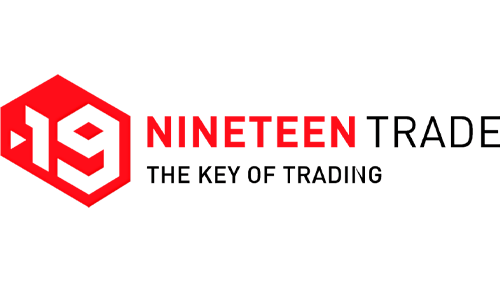Personalized content recommendations have become a cornerstone of engaging digital experiences. Moving beyond static models, the challenge lies in building recommendation systems capable of adapting in real-time to user interactions and content updates. This deep dive explores the technical intricacies of designing, implementing, and maintaining a live streaming recommendation engine powered by AI, with actionable steps to ensure low latency, high scalability, and accuracy. We will focus on practical techniques to handle data ingestion, model deployment, and system optimization, providing concrete solutions for real-world applications.
Table of Contents
- Designing a Pipeline for Live Data Ingestion and Processing
- Building a Streaming Recommendation Engine Using Apache Kafka and TensorFlow
- Handling Latency and Scalability Challenges in Real-Time Recommendations
- Practical Implementation: Step-by-Step Guide
- Troubleshooting Common Pitfalls and Optimization Tips
- Final Insights and Strategic Considerations
Designing a Pipeline for Live Data Ingestion and Processing
A robust real-time recommendation system hinges on an efficient data pipeline that can handle high-velocity streams of user interactions, content updates, and contextual signals. The first step involves selecting appropriate data ingestion tools such as Apache Kafka or Amazon Kinesis, which are designed to process millions of events per second with low latency. Establish a producer-consumer architecture where user actions (clicks, views, likes) are captured by producers and fed into Kafka topics or streams.
Next, implement a stream processing layer using frameworks like Apache Flink or Apache Spark Streaming. This layer performs real-time feature extraction, such as computing user embeddings or content vectors, and filters or aggregates data to prepare it for model inference. To ensure minimal latency, optimize serialization formats (e.g., Protocol Buffers, Avro) and configure batch sizes and windowing parameters carefully.
Building a Streaming Recommendation Engine Using Apache Kafka and TensorFlow
The core of real-time personalization is a model that can generate recommendations on-the-fly. Here, the architecture typically involves:
- Data Stream Ingestion: User interaction events are published to Kafka topics.
- Feature Processing: A stream processor consumes the data, updates user or content embeddings (e.g., via online learning or incremental updates), and prepares feature vectors.
- Model Serving: A TensorFlow Serving setup hosts trained models capable of batch or real-time inference.
- Recommendation Output: The inferred recommendations are routed back to the front-end or content delivery network via Kafka or REST APIs.
For illustration, consider implementing a pipeline where:
- Producers push user actions into Kafka topics.
- A Flink job consumes these events, updates user embedding vectors using an online deep learning approach (e.g., incremental training with TensorFlow), and writes the embeddings to a state store.
- A separate inference service reads the latest embeddings, computes recommendations using a trained model, and outputs suggestion lists.
Handling Latency and Scalability Challenges in Real-Time Recommendations
Achieving low latency at scale requires meticulous system design:
- Horizontal Scaling: Deploy Kafka brokers, stream processors, and inference servers across multiple nodes. Use container orchestration (e.g., Kubernetes) for dynamic scaling.
- Model Optimization: Convert models to TensorFlow Lite or use TensorRT for faster inference. Batch requests where possible to maximize throughput without increasing latency.
- Caching: Cache frequently accessed embeddings and recommendations at the edge or within CDN layers to reduce repeated computation.
- Monitoring & Tuning: Use Prometheus and Grafana to monitor latency, throughput, and resource utilization. Regularly tune Kafka partition counts, consumer group numbers, and batch sizes.
Expert Tip: Prioritize latency-critical paths by deploying inference models close to the data source—edge nodes or CDN points—using tools like TensorFlow Serving with GPU acceleration to reduce inference time to milliseconds.
Practical Implementation: Step-by-Step Guide
Below is a concrete, actionable roadmap:
- Set Up Kafka Infrastructure: Deploy a Kafka cluster with at least 3 brokers. Create topics such as
user_interactionsandrecommendation_requests. - Implement Data Producers: Use Kafka producer clients in your web app or mobile SDKs to send user events, ensuring data is serialized efficiently (e.g., using Protocol Buffers).
- Create Stream Processing Jobs: Develop Flink jobs that consume from
user_interactions, update user embeddings using an online learning approach (e.g., incremental training with TensorFlow), and store embeddings in a distributed cache like Redis or RocksDB. - Train the Recommendation Model Offline: Periodically retrain models with accumulated data to capture evolving user preferences. Save the latest model checkpoints.
- Deploy the Model for Inference: Use TensorFlow Serving or TorchServe, with REST or gRPC APIs, to serve real-time inference requests.
- Integrate the Recommendation Output: Consume inference results to update UI components asynchronously, ensuring recommendations are fresh and relevant.
Critical Note: Always validate streaming feature data for consistency. Implement fallback strategies, such as default recommendations, during system outages or high-latency periods.
Troubleshooting Common Pitfalls and Optimization Tips
Despite meticulous planning, issues may arise:
- High Latency: Check network delays, optimize serialization, and reduce model complexity. Use asynchronous calls for inference requests.
- Model Drift: Regularly monitor prediction accuracy metrics (e.g., click-through rate) and retrain models at intervals aligned with data shifts.
- Data Skew or Imbalance: Use stratified sampling during training and implement adaptive weighting to maintain recommendation quality across diverse user segments.
- System Failures: Implement comprehensive logging, alerting, and fallback recommendation lists to ensure user experience remains unaffected during outages.
Pro Tip: Use canary deployments for model updates and gradually shift traffic from old to new models, minimizing risk of performance degradation.
Final Insights and Strategic Considerations
Implementing a real-time, AI-powered recommendation engine requires a nuanced combination of infrastructure design, model engineering, and continuous monitoring. Actionable steps include establishing a scalable data pipeline, optimizing models for low latency, and maintaining system health through vigilant troubleshooting. As detailed in the broader context of «{tier2_theme}», such systems unlock powerful personalization capabilities, but must be managed thoughtfully to prevent biases, ensure fairness, and align with business objectives.
For foundational strategies and technical prerequisites, consider reviewing «{tier1_theme}». Combining deep technical expertise with strategic oversight ensures that your recommendation system not only performs efficiently but also drives meaningful value and user trust in your platform.


 English
English Español
Español Français
Français